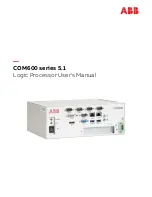
Operation Manual, Xymba XB-42
V108
14
© 2008, Acronova Technology, Inc.
When another non-blank disc is detected, a new disc image will be
written to the built-in hard disk. The previously stored image will be
overwritten and the new image will be used for disc duplication.
Do not use rewritable discs as a master disc, since Xymba is designed
to always erase rewritable discs before attempting to write data to
them.
Write Speed: Production Rate vs. Duplication Quality
By pressing the appropriate button, Xymba can perform High-Speed
and Safe-Speed Duplication accordingly. High-Speed Duplication
writes to discs at the highest possible speed according to the recorder
and blank disc characteristics.
Although High-Speed Duplication takes less time to write to a disc, and
produces more discs per hour than Safe-Speed Duplication, a higher
failure rate may be encountered, especially when the blank disc quality
is not good.
Most users choose High-Speed Duplication, while professional users
prefer Safe-Speed to duplicate audio and video discs, for improved
duplicate disc quality.
When duplicate disc quality is critical, activate the Verify Disc mode to
have Xymba read and verify each duplicate disc with the source image
immediately after the disc is duplicated.
Duplicate Disc Verification
Xymba is not only able to verify each duplicate disc with the source
disc image during a duplication cycle, it can batch verify a stack of
discs with a master disc. Duplicate disc verification involves reading
and comparing the duplicate disc image with the master disc image on
the hard disk.
Disc verification is performed according to the disc data format. For
data disc verification, both the read and comparison process will be
performed. However, due to the limitation of industry standards, for
audio disc verification it will only perform the reading check, and not
the comparison process.
Handling Disc Write Failures
Some discs may be defective and fail during a write session. A failed
disc will be sent to the Reject Disc Tray when it is open, or discarded to
the Reject Disc Slot when the Reject Disc Tray is closed.










































